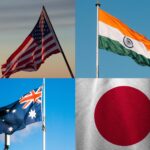The terms ‘Free Trade’ and ‘Protectionism’ are pretty common in international trade. Free trade is mainly referred to as Laissez-faire. It expects to enhance the economy to allow the country to operate globally. On the other hand, protectionism refers to safeguarding the economy’s growth by restricting imports. While free trade promotes the easy flow of imports and exports of goods and services, protectionism focuses on restricting trade. Both the narratives, free trade and protectionism, have their pros & cons.

Historical Arguments over Both Policies
The argument dates back to the 15th century in Europe regarding which policy to follow under the theory of Mercantilism. This perspective asserts that in order for an economy to prosper, a country should excel in every field. The government must impose a heavy tax on import duties to prevent foreign players from entering the territory. In this way, the country can achieve economic autarky as it would be self-sufficient in every prospect.
However, on the other hand, Adam Smith, an economist and Scottish philosopher in the late 18th century, argued that free trade would amplify the growth of the country or countries involved in the trade. For instance, if one can get an imported product at a lower price and with higher quality than what one can get at 10x the price in his own country, why would he purchase the higher-priced product when he can save money and buy other needed items. Also, a further argument is that if every country was the ‘Jack of All Trades’, what was even the need to promote trade and interdependence.

Free Trade VS Trade Protectionism
The debate over whether nations should adopt protectionism or free trade and implement it into their foreign trade policies has always been in discussion since the beginning of the argument. Recently, this subject has once again become heated among economists. People share opposing viewpoints on these arguments.
Free trade and its advantages
Free trade offers a platform where trade promotion occurs naturally as markets are the driving forces behind it. However, protectionism has numerous parameters like tariffs, quotas and subsidies.
“Along with offering an expanded and broader market, free trade boosts the production of the product. It further opens up new channels for trade.”
Since there is no restriction on trade, it accelerates the nation’s economic growth; the product becomes cost-effective, and the quality also gets elevated. One country then works in producing its specialised field, which results in more efficiency and productivity. Hence, country A exports its’ specialised products to other nations, and in return, other nations export their specialised material to the countries.
The process of trade has a two-way flow. This gain helps widen the nation’s economic prospects, which subsequently enhances the country’s national income. It results in saving an enormous amount of money. That money could be an investment to improve manufacturing and production technologies or in growing sectors, stimulating growth and ensuring a high capital investment.

How does free trade compliments technology?
The interconnected and interdependent world we live in would not have been possible in an isolated setting. Confining the technologies to only a single country or a few countries, the technological advancements could have brought more disparity than prosperity in the world.
As technology is introduced by one and modified by another, progress and productivity become exponential. To solidify this fact, let us consider the case of Apple iPhones. The materials come from all over the world. Besides, there are numerous stakeholders involved. For instance, China provides the camera while the speaker is from Japan; the screens and chips are from the U.S.A, and the other products are from other countries. Then all the parts are assembled mainly through Foxconn in China. The final products get distributed to all the nations through global supply chains with the help of delivery partners. Then the batches get supplied to local vendors, and from there, it comes right into our pockets.

Even after all the benefits attached to free trade, many economists still promote and voice trade protectionism. There are some staunch agendas or arguments for it, such as nationalism, infant industry, and employment opportunities. Meanwhile, they consider tariffs and quotas as instruments of protectionism.
Firstly, by nationalism, it can be stated that the country urges its citizens to buy and use the products made in their own country. ‘Swadeshi’, ‘Made in India’, ‘Vocal for Local’ campaigns introduced by the Government of India promote patriotic feelings and encourage citizens to buy products from local brands. Buying local products will bring ample opportunities to the country, right from production to employment opportunities.
Protectionism and its advantages
Under the protectionism policies, export products have trade barriers and quotas. Generally, the excise duties imposed bring revenue to protect the domestic brand from foreign brands. However, quotas are usually more helpful as there is a certain quantitative limit on the import of the item, and the import of that item is impossible beyond that limit. These impositions are generally known as quantitative restrictions.
“Protectionism promotes and preserves domestic employment opportunities because the productions are from the home ground plant, which also helps in elevating the status of many unemployed personnel.”
At any cost, one could not neglect the protection of the infant industry, specifically in developing countries. By imposing quotas, the infant industries could be saved and built in the home country before competing with foreign brands. Otherwise, the infant company will shatter before its proper functioning and launch.
By imposing extremely high tariffs on imports and exports, the company can practice income redistribution. The revenue generated will be redistributed among the lower section of society under one of the economic policy objectives. If there are no proper arrangements, protectionism could bring disparity among the sections of society as the rich will grow richer. At the same time, the poor will become worse off.

Impact on Global Political Economy: Way Forward
In free trade, the living standard of the trading countries gets improvised, and there are mutual welfare gains while making the countries economically interdependent. However, in protectionism, the economy receives restricted or confined if certain countries follow the protectionism policy. The government does not get more extensive access to the market, and the revenue generation and distribution are limited.
The U.S – China trade war, which has been going on since 2018, did not only affect the economies but also profoundly jolted the political institutions to the core.

Image courtesy- of CNN
Both the U.S.A and China, being the two largest economies in the global sphere, has been facing a breakdown in bilateral ties, which further led to mismanagement within the system of the multilateral institutions due to opposing arguments in discussions.
Russia-Ukraine War and the Global Political Economy
Even in the Russia-Ukraine crisis, where the United States and political institutions have imposed sanctions on Russia, there are accusations that China provided military and economic assistance to Russia.

Image courtesy- of Reuters
The Biden Administration has continuously been warning China for providing support to Russia. Moreover, China has also signalled that it might invade Taiwan anytime by defining the Russia-Ukraine Crisis as a ‘Personal Historical Matter’. The Global Political Economy is at a crossroads as the use of both policies is widespread.
This Russia-Ukraine crisis has intensified this world order, and there will be modifications to the trade policies to a greater extent.
Conclusion
The recent decade has reported the impact of the rise in protectionism on the global political economy. The trade integration process slowed down, resulting in global trade getting inflicted due to trade distortion.
It will be interesting to observe how all the multilateral institutions will respond and reframe the policies once the Russia-Ukraine conflict settles down and what role all the major international players will play in the global change of the policy. Whether the free trade policy will continue to prevail in major parts of the world? Alternatively, will there be a redefining of trade protectionism with some more flexible reforms in the policies to achieve a state of balance?
Also, read the article on the latest India-Canada free trade agreement here!
W
About the Author
AAKRITI VERMA

Aakriti Verma is a fun-loving person, Apart from being a budding reader and a content writer, she has an extreme interest in Socialising. An Extrovert who has literally adopted introverts around her. She is currently pursuing a Master’s in International Relations.






